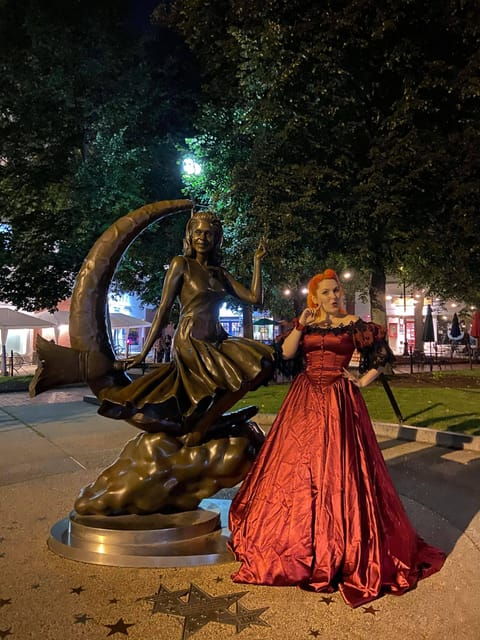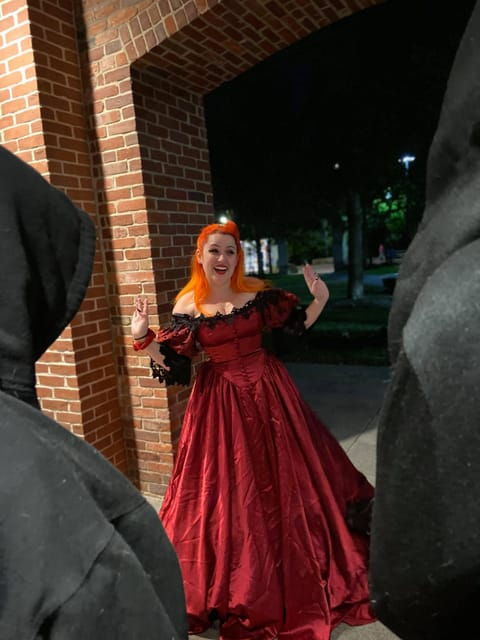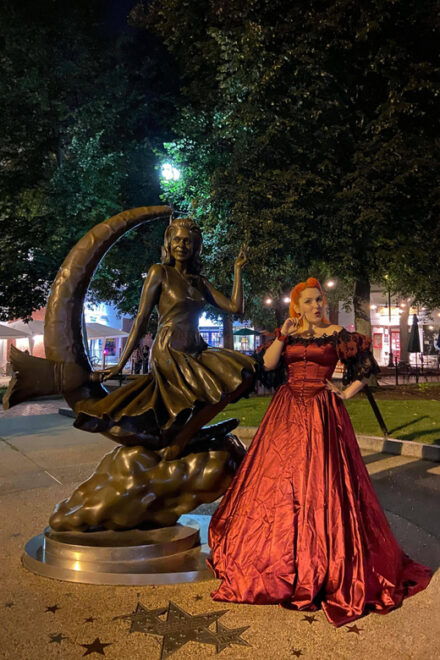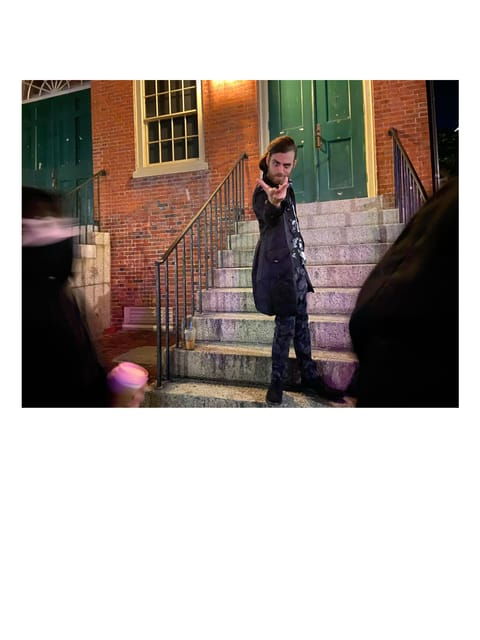Step back in time to the notorious era of the Salem Witch Trials, where fear and suspicion tainted the very fabric of Puritan society. "Steps Through 1692" guides visitors on a haunting journey through the streets of Salem, unraveling the complex political, social, and religious tensions that fueled this dark chapter in American history. Follow in the footsteps of the accused, explore memorials to the victims, and gain a deeper understanding of the Puritan beliefs that shaped this community’s response to the perceived threat of witchcraft. The path ahead may be unsettling, but the lessons learned could resonate for generations.
Good To Know

- The Salem witch trials were sparked by accusations of witchcraft, leading to the execution of 20 alleged witches and hundreds of incarcerations.
- Puritan beliefs, economic pressures, local rivalries, and political tensions created a volatile environment that fueled the mass hysteria in Salem.
- The trials took place in various significant locations, including the Salem Witch Trials Memorial, Old Burying Point Cemetery, and the Witch House.
- The victims of the trials are memorialized, and their legacies continue to influence Salem’s journey towards healing and reconciliation.
- Today, Salem integrates its dark history with a vibrant cultural scene, attracting visitors and promoting awareness of the dangers of unchecked fear and prejudice.
Salem Witch Trials Overview

The Salem Witch Trials of 1692 stand out as a dark chapter in American history, unearthing the profound social, political, and religious tensions that gripped the Puritan colony of Massachusetts.
Fueled by hysteria, superstition, and a rigid devotion to religious orthodoxy, the trials saw the execution of 20 alleged witches, along with the incarceration of hundreds more.
This tragic episode sheds light on the complexities of colonial New England, where the lines between church, state, and community were deeply intertwined.
The trials also underscore the capacity for fear and intolerance to spiral out of control, leaving a lasting impact on the town of Salem and the broader American psyche.
Find more activities and experiences we've covered in Salem.
Significant Trial Locations

Amidst the turmoil of the Salem Witch Trials, several locations within the town served as pivotal backdrops to the unfolding tragedy.
The Salem Witch Trials Memorial stands as a solemn tribute to the 20 victims, their names etched in stone.
The Old Burying Point Cemetery is the final resting place of Judge John Hathorne, whose actions during the trials cast a long shadow.
The Witch House, home of Judge Jonathan Corwin, offers a glimpse into the architectural style of the era.
The Old Salem Courthouse hosted the trials and sentencing, while Bridget Bishop’s Memorial marks the site associated with the first person executed.
These historic sites bear witness to the complex social, political, and religious factors that fueled the hysteria of 1692.
Victims and Memorials

Solemn memorials dot the landscape of Salem, Massachusetts, serving as poignant reminders of the tragic victims felled by the hysteria of the 1692 Witch Trials.
At the Salem Witch Trials Memorial, visitors pay respects to the 20 innocent souls executed for witchcraft. The Old Burying Point Cemetery is the final resting place of Judge John Hathorne, whose zealous prosecution condemned many.
Bridget Bishop’s simple memorial marks the site of the first execution. These somber tributes underscore the immense human toll of the trials, inspiring reflection on the dangers of unbridled fear and prejudice.
Though the past can’t be undone, these memorials ensure the victims’ legacies endure, guiding Salem’s ongoing journey of healing and reconciliation.
Puritan Lifestyle and Beliefs
At the heart of Salem’s tumultuous history lay the Puritans’ unwavering commitment to their faith.
This devout community strictly adhered to Calvinist doctrines, believing in predestination and the inherent depravity of humankind.
Puritans maintained a rigid moral code, policing even the most mundane aspects of daily life.
Any deviation from this austere lifestyle was viewed as a threat to the social order and a defiance of God’s will.
This uncompromising worldview, combined with local rivalries and economic pressures, ultimately created the volatile conditions that sparked the infamous Salem Witch Trials.
Understanding the Puritans’ beliefs is crucial to untangling the complex web of factors that led to this dark chapter in Salem’s history.
More Great Tours NearbyFactors Behind the Hysteria
Several complex factors contributed to the hysteria that gripped Salem during the infamous witch trials of 1692. Puritan religious beliefs, economic pressures, and local rivalries all fueled the panicked atmosphere. A volatile mix of social, political, and theological tensions created a perfect storm for the mass hysteria to take hold.
| Factors Fueling the Hysteria | |
|---|---|
| Puritan Theology | Belief in the Devil’s influence, fear of the occult |
| Economic Pressures | Land disputes, property redistribution, social upheaval |
| Local Rivalries | Personal vendettas, competing for status and power |
| Political Tensions | Instability in colonial governance, mistrust of authority |
The trials would leave an indelible mark on Salem, with their legacy still reverberating centuries later.
- Requiem for Salem Walking Ghost Tour
- Mysteries and Murders of Salem Guided Night-Time Walking Tour
- The Salem Witch Walk
- Triple Threat Combo Pass: 3 TOURS (3:30pm, 5pm, & 7pm or 8:30pm)
- Salem “Hocus Pocus” Movie Locations Tour (30th Anniversary)
- Salems Dark History & Witchcraft Hysteria Guided Walking Tour
Lasting Impact on Salem

The impact of the Salem witch trials continued to resonate in the community for generations. The trials left an indelible mark on the town, transforming it into a symbol of religious intolerance and mass hysteria.
The victims’ families faced ongoing stigma and discrimination, while the accused’s descendants grappled with the legacy of their ancestors’ trials. Salem’s reputation as a place of dark history discouraged economic growth and tourism for decades.
Yet, over time, the town reconciled with its past, using the trials as a cautionary tale about the dangers of unchecked fear and prejudice.
Today, Salem embraces its tumultuous history, blending it with a vibrant cultural scene that attracts visitors from around the world.
Tour Recommendations

What should visitors expect on this immersive Salem Witch Trials tour? Comfortable shoes are a must, as the guided walk covers significant ground through Salem’s historic downtown.
Dress appropriately for the weather, as the tour takes place outdoors. While photography is allowed, visitors should be respectful at sensitive sites like the Witch Trials Memorial.
The content may not be suitable for young children, but older ones can gain valuable historical insights. Smoking, alcohol, and drugs are strictly prohibited.
Ultimately, this tour offers a thought-provoking exploration of the complex social, political, and religious factors that fueled the infamous witch trials, leaving a lasting impact on the community.
Important Guidelines

Visitors should be mindful of a few key guidelines to ensure a smooth and respectful tour experience.
The tour involves significant walking, so comfortable shoes are a must. As an outdoor tour, dressing appropriately for the weather is essential.
While photography is allowed, it’s important to be respectful at sensitive sites. Smoking, alcohol, and drugs aren’t permitted.
The tour covers mature content and isn’t suitable for children under 8 years old.
Frequently Asked Questions
Is the Tour Guide Certified by a Historical Organization?
The tour guide is certified, providing authoritative insights into the Salem Witch Trials. They’re well-versed in the historical details and can offer meaningful context about this tragic period in Salem’s past.
Are Student Discounts or Group Rates Available for the Tour?
The tour company offers discounted rates for students and group bookings, making the experience accessible to a wider audience. Visitors should inquire about these special rates when reserving their spot on the guided tour.
Can I Purchase Additional Merchandise or Souvenirs During the Tour?
Visitors can purchase additional Salem-themed merchandise and souvenirs at the end of the walking tour. A variety of options are available, allowing you to commemorate your educational experience and support local businesses.
Are There Any Food or Drink Options Available Along the Tour Route?
The tour route includes several historic sites, but there are no food or drink options provided along the way. Guests are advised to plan ahead and bring any desired refreshments with them for the duration of the 1-hour walking tour.
Is the Tour Suitable for Individuals With Limited Mobility or Disabilities?
The tour is wheelchair accessible, making it suitable for those with limited mobility. The guide is prepared to accommodate visitors with disabilities and ensure they can fully participate in the historical exploration of Salem.
The Sum Up
The "Steps Through 1692" tour offers a profound exploration of the Salem Witch Trials, guiding visitors through the very streets where this dark chapter unfolded. By illuminating the political, social, and religious tensions that fueled the hysteria, the tour encourages a deeper understanding of Puritan beliefs and their lasting impact on the community. Ultimately, it invites reflection on the consequences of fear and intolerance, serving as a poignant reminder of the fragility of justice.
You can check availability for your dates here: More Great Tours NearbyMore Tour Reviews in Salem
Looking for something different? Other Salem activities we've written about
- Pirate Costume Photo Shoot
- Salem Movie Magic Tour: Hocus Pocus and Bewitched locations
- The Ghost Walk. Tortured Souls of Salem
- High Witch History Walking Tour of Salem
- Ghosts of Christmas Past a Haunted Holiday Stroll in Salem
- Ghostly Tales of Salem Walking Tour
- Cemetery and Witchcraft Trials Tour
- Best Hocus Pocus Movies & More Tour
- Spooky Ramen Tours
- Tales of Salem Halloween Guided Walking Tour
- Salem Vintage Postcard Tours
- Experience Authentic Salem Séance with Entry Pass
